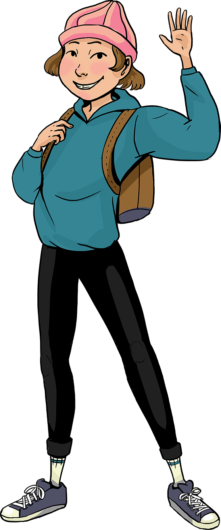Drama stories

Contents of school visits
The Peace School organizes activity sets for school classes and student groups, combining global education and drama methods. Key themes are global development issues, human rights, equality, the UN Sustainable Development Goals and global citizen skills. The Peace School activity sets support curricula-based global education, wide-ranging competence and function as a method that crosses subject boundaries.
In classroom teaching of the Peace School, drama stories are used for addressing themes of global education. They are scripted units, frame stories, in which a story is functionally conveyed by using drama methods. The drama stories enable students to place themselves inside the story and the position of another person and to get a first-hand experience of the themes discussed. The aim of all stories is to encourage for active citizenship and to strengthen the skills of a global citizen.
Drama stories for different age groups
The stories are divided into two categories according to school grades. Each category includes a teacher’s perspective on the suitability of the story themes and the Peace School set for teaching.
- Stories for primary school grades 4-6: the themes are the UN Sustainable Development Goals (Agenda 2030), growing into global responsibility and into a lifestyle that promotes equality. Drama enables the practice of taking the position of another person and different perspectives, as well as of problem solving skills. The teacher’s perspective is written by special education teacher Hanna Niittymäki.
- Stories for middle and high school groups: current issues of peace and global interdependence, root causes behind conflicts and inequality, and human rights are more broadly examined. Also possibilities for young people to influence the building of a sustainable future are viewed. The teacher’s perspective is written by history and social studies teacher Johanna Laaja.
Drama methods in teaching
The Peace School drama work is well defined by the four principles for the use of drama in teaching by Owens and Barber:
- A firm belief in drama as a serious game, which offers an opportunity for situational learning.
- Experience gained from using drama
- Empirical evidence of the effectiveness of drama (e.g. drama stories)
- The opportunity to influence through the drama process
The means of drama are tools for enabling genuine dialogue. They are like building blocks that support a thinking process, “making the invisible visible”. Their task is to reveal, to make perspectives and details, that we don’t pay attention to in everyday life, visible on a new and re-experienced level, and to bring them under common scrutiny.
In drama work, the attention is put on listening and presence, as well as on the focal point of events and changes in it. Key concepts are also tension, feelings and thoughts.
